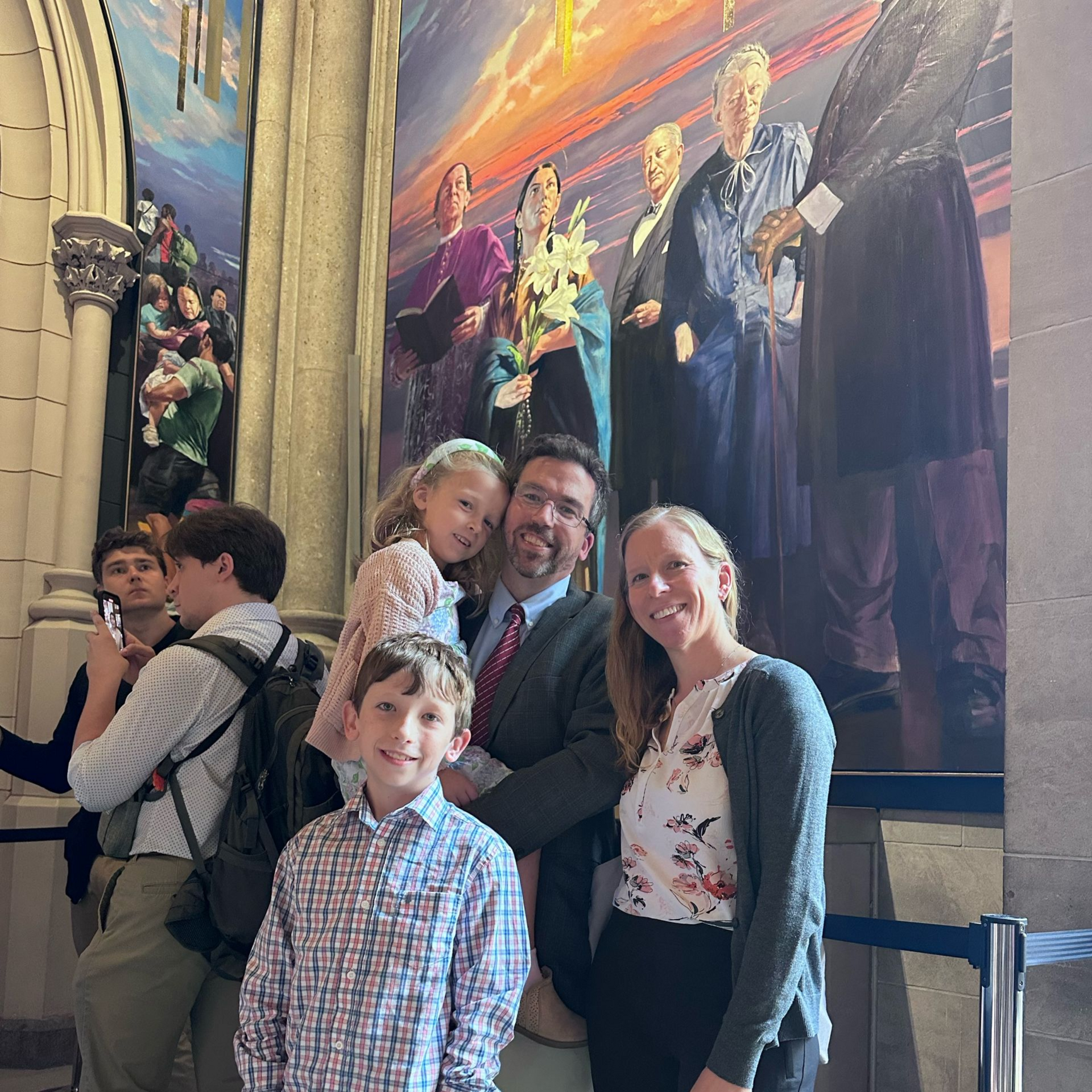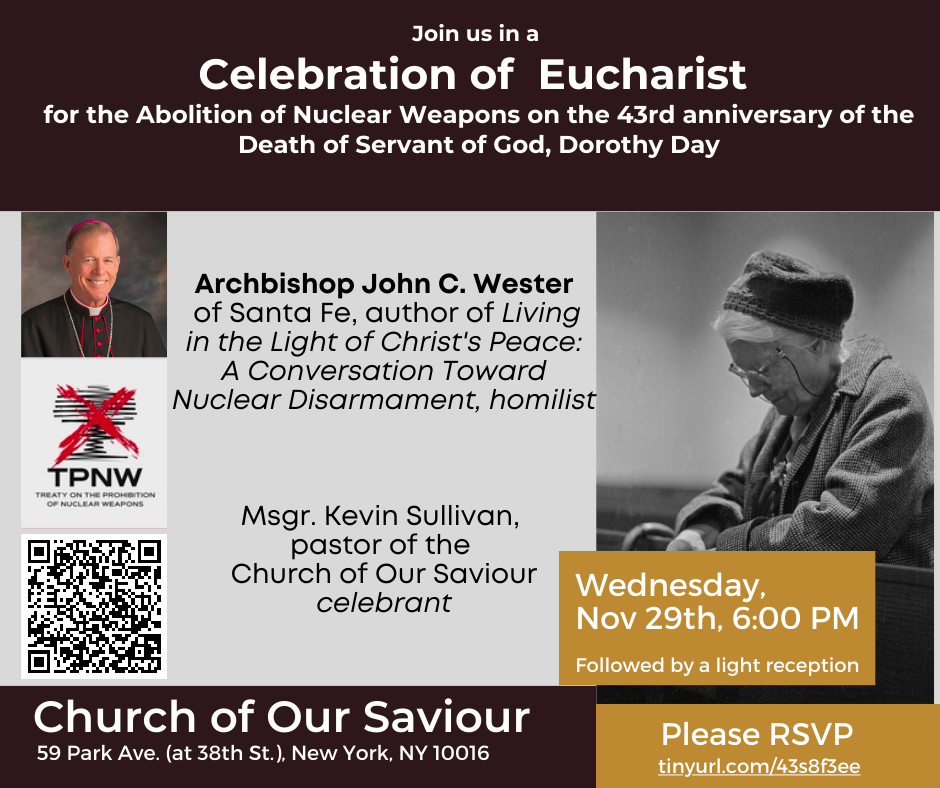Speaking of good things to read, we would like to recommend to you two recent articles written by dear friends of the Dorothy Day Guild. On All Souls Day, Chicago Catholic Worker and journalist Renée Roden published “Servant of God Dorothy Day and Her Revolution of Love, as part of a series on American Eucharistic Witnesses, accompanied by a beautiful original woodcut by artist Connor Miller. This series is offered in concert with the National Eucharistic Revival currently taking place in the United States. Dorothy herself addressed the last Eucharistic Congress in the United States, which took place in Philadelphia in 1976. In her talk, Dorothy spoke “on the Eucharist, the brotherhood of all men, and the perversion of our function as co-creators by making and waging terrible war… ‘Our Creator gave us life, and the Eucharist to sustain our life. But we gave the world instruments of death of inconceivable magnitude,’ she said.” Many thanks to Renée for sharing this reflection on the social implications of Dorothy’s devotion to the Body of Christ.
Dorothy Day Guild November 2023 Missive
Dear friends,
Happy birthday to Dorothy Day! Today marks the 126th anniversary of Dorothy’s birth in Brooklyn, New York to Grace and John Day. We hope you will join us in celebrating today, and for the rest of the month leading up to Dorothy’s anniversary of death on November 29th!
We have so much to share with you today, but first, we are thrilled to announce that we have revamped our Guild website! We hope that you’ll enjoy the refreshed layout and increased accessibility to our newsletter, blog, and upcoming events that the new version of the site offers. Our site now contains a full archive of the Guild’s publications, so you’ll continue to have full access to back issues of “In Our Time” and other posts. Over the coming months, we look forward to adding additional free educational content about Dorothy’s life and legacy and other resources for you to share with your communities, so stay tuned!
Mass for the Abolition of Nuclear Weapons:
The Guild was so proud to co-sponsor two recent events at Manhattan College. Kristi Pfister’s artist talk on her exhibit, “Radical Action: Tracing Dorothy Day” and Lincoln Rice’s lecture “Peter Maurin: The Forgotten Radical” were the perfect way to bookend the All Hallows Eve, All Saints, and All Souls holiday and kick off Dorothy’s birthday month. If you haven’t seen Kristi’s show yet, it’s on display in the O’Malley Library until December. Thank you so much, Lincoln and Kristi, for sharing your artistic and academic gifts with us!
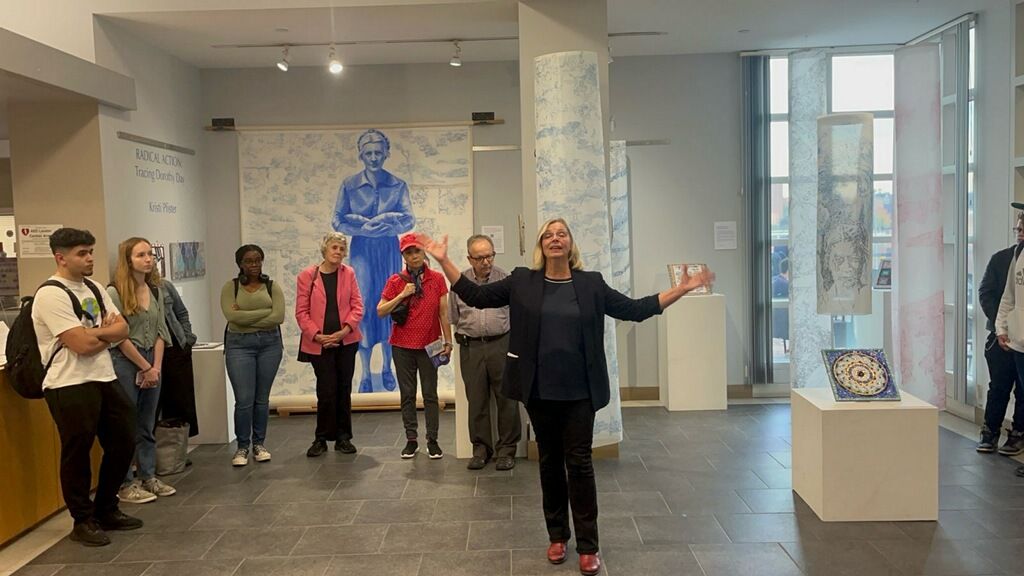
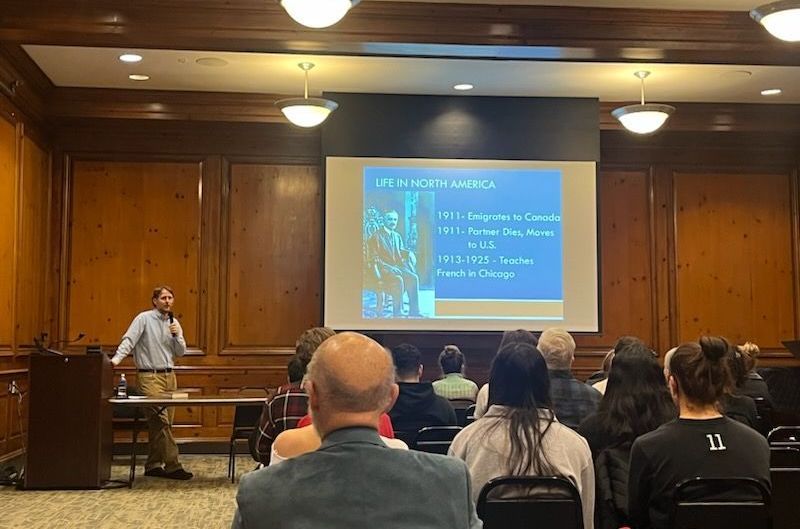
Looking ahead to the end of the month, we invite you to join us on November 29th, the 43rd anniversary of Dorothy’s death for a celebration of Eucharist for the Abolition of Nuclear Weapons. As we head into the Advent season, please join us in praying for peace and especially for an end to nuclear weapons development and testing. Bishop John Wester of Santa Fe will concelebrate mass with Msgr. Kevin Sullivan at 6:00 pm on Wednesday November 29th at the Church of Our Savior (59 Park Ave in Manhattan, NY). Bishop Wester is the author of a powerful pastoral letter, “Living in the Light of Christ’s Peace: A Conversation Towards Nuclear Disarmament,” which we highly recommend as spiritual reading for this season.
After mass, we hope that you’ll join us for a reception, so please RSVP using this form, and feel free to invite your friends and family. We know that Dorothy is with us when we work to end the scourge of nuclear war– let’s bring her legacy of peacebuilding forward into the new liturgical year together!
Reading Recommendations for November:
Also published on All Souls, we have been refreshed and challenged by Iowa Catholic Worker Brian Terrell’s “Dorothy Day Inspires a New Meaning of Saint,” a reflection on Dorothy’s expansive ability to recognize sanctity beyond the boundaries of the Catholic Church. Well before Vatican II, Dorothy understood the universal call to holiness, and she understood that shared vocation of our human family to be truly universal. As Brian writes,
Proclaiming that all are called to be saints, Day was not suggesting that all are called to be good Catholics or good Christians or even to believe in God. The saint-revolutionist synthesis, the personalist action that the world is even more urgently crying aloud for today, and the holiness that its example will impel in others have nothing to do with piety, religious confessions, or the sacraments… As much as Day herself found her home in the church and strength in its sacraments, such considerations are not necessarily relevant to the revolutionary sanctity that Dorothy Day said that each person is called to.
Our world needs as many saints as we can get, both within and outside the Church. We pray that many will follow in the footsteps of figures like Angela Davis, Ignazio Silone, and Mahatma Gandhi, in their own way living out the Gospel in their work for justice. Thank you to Brian for this encouragement to look for such radical holiness in the fierce witness of our brothers and sisters.
Membership in the Dorothy Day Guild:
Here at the Guild, as we approach the 43rd anniversary of Dorothy’s death on November 29th we anticipate with great hope future years in which we might eventually celebrate this day as Dorothy’s feast day, her birthday into heaven. You have helped bring this future closer by your support of and membership in the Dorothy Day Guild.
Our Guild is made up of the faithful who have been touched by some aspect of Dorothy’s life and witness. If you are reading this letter, something about Dorothy’s legacy has spoken to you and perhaps altered the course of your life in a significant way. The work of the Guild relies on the dedication of our members, who in addition to their financial support of Dorothy’s cause in Rome commit to praying for Dorothy’s canonization, sharing her story, and living out her legacy of Gospel nonviolence and voluntary poverty in our world. Thank you so much for participating in this work! Whether you are a brand-new or founding member of the Guild, we are so grateful for all of the support and encouragement you have offered to this cause.
A few words from Dorothy:
I’d like to close with a few lines from Dorothy’s December 1978 “On Pilgrimage” column. Towards the end of her life, Dorothy was the recipient of much tenderness and admiration from her friends and family members, which she notes with gratitude in this passage taken from her diary on the eighty first anniversary of her birth:
November 8th–my birthday–I was born in 1897. Mary Lathrop Pope has just put up two, gigantic sheets of paper on my wall, a painting she did of a pink-robed, guardian angel, with orange hair, carrying an armload of huge lilies–blue sky and green earth. Wildly decorative, (Mary had made her first retreat after her conversion at Mary Reparatrix, on East 29th Street, a church of perpetual adoration, with a retreat house connected. I had made my first retreat at that convent too.)
Tamar embroidered a gorgeous, round pillowcase and stuffed it. Mike DeGregory and Michelle Timmins sent me an unusually beautiful Madonna of Czestochowa. I will pray to her for them, and our Polish Pope. People send us cups and plates of china, Spode, also Limoges–such luxury! There was a party in the dining room after Mass, and many flowers.
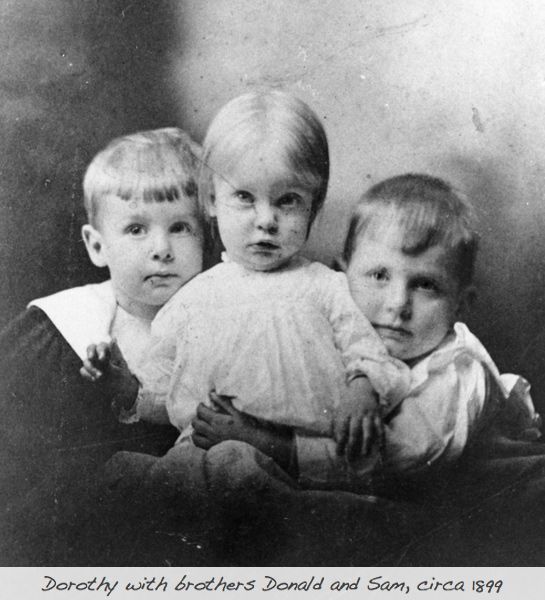
How wonderful, in this dark and cold month of the year, to be reminded of Dorothy’s love of beauty in art, nature, and human relationships. May this season also bring each of you many flowers.
In peace,
Dr. Casey Mullaney, on behalf of the Dorothy Day Guild
Share this post


